Neuroscience
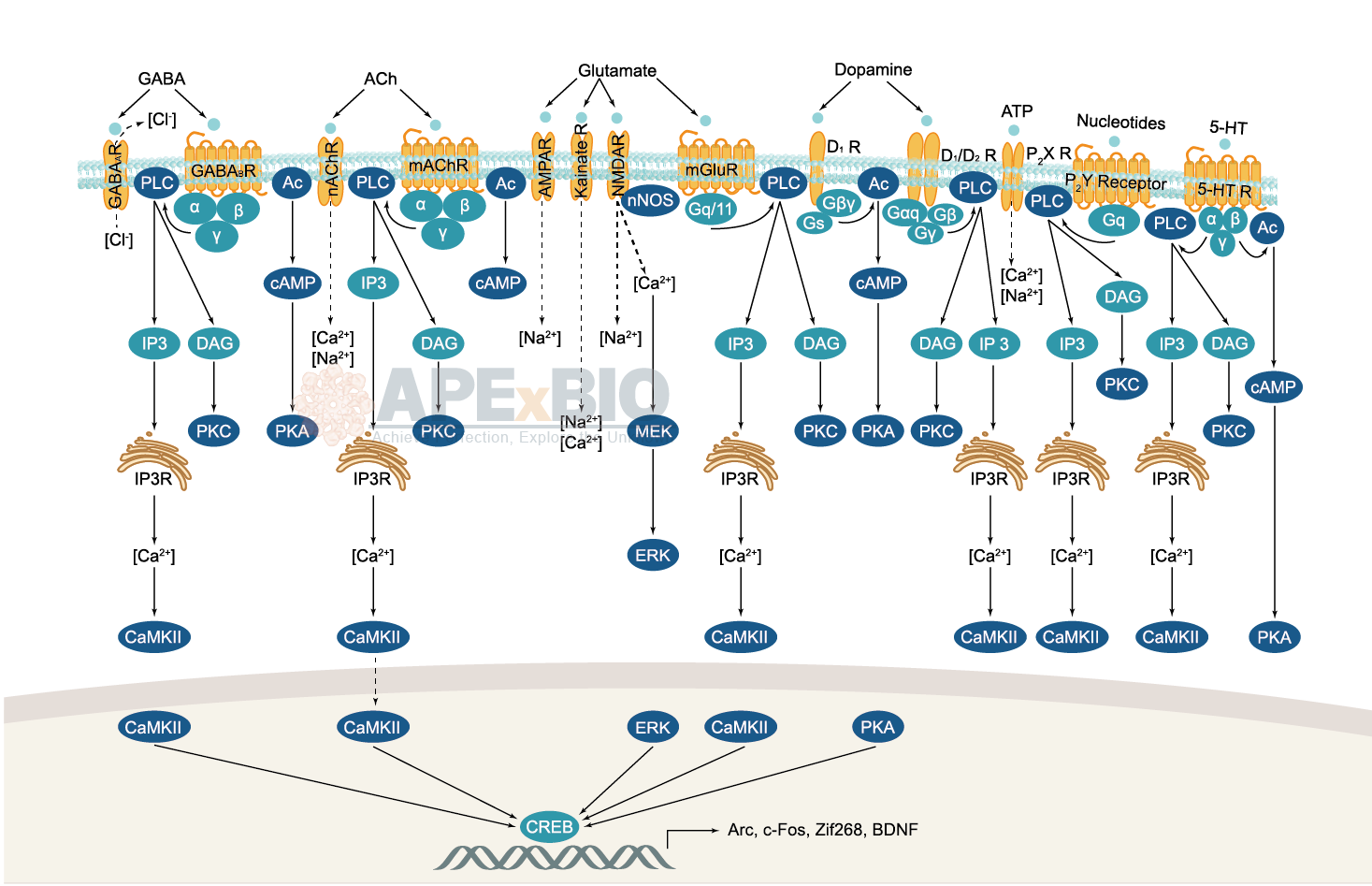
Neurotransmitter receptors function via various G-protein coupled and G-protein independent mechanisms that activate downstream intracellular signaling pathways such as cAMP/PKA, PI3K/AKT, phospholipase A2, and phospholipase C pathways. For instance, dopamine receptors act through adenylate cyclase to activate PKA and other signaling molecules, thereby mediate gene expression through the actions of CREB and other transcription factors. Other neurotransmitters such as NMDAR or AMPAR are associated with ion channels that control flux of Ca2+ and Na+, thus propagating the action potential across the post-synaptic neuron.
Dysfunctions in GABAergic/glutamatergic/serotonergic/dopaminergic pathways result in a broad range of neurological disorders such as chronic pain, neurodegenerative diseases, and insomnia, as well as mental disorders including schizophrenia, bipolar disorder, depression, and addiction.
-
 B1033 (R)-(+)-TolterodineSummary: Muscarinic receptor antagonists
B1033 (R)-(+)-TolterodineSummary: Muscarinic receptor antagonists -
 B1512 PregnenoloneSummary: steroid hormone
B1512 PregnenoloneSummary: steroid hormone -
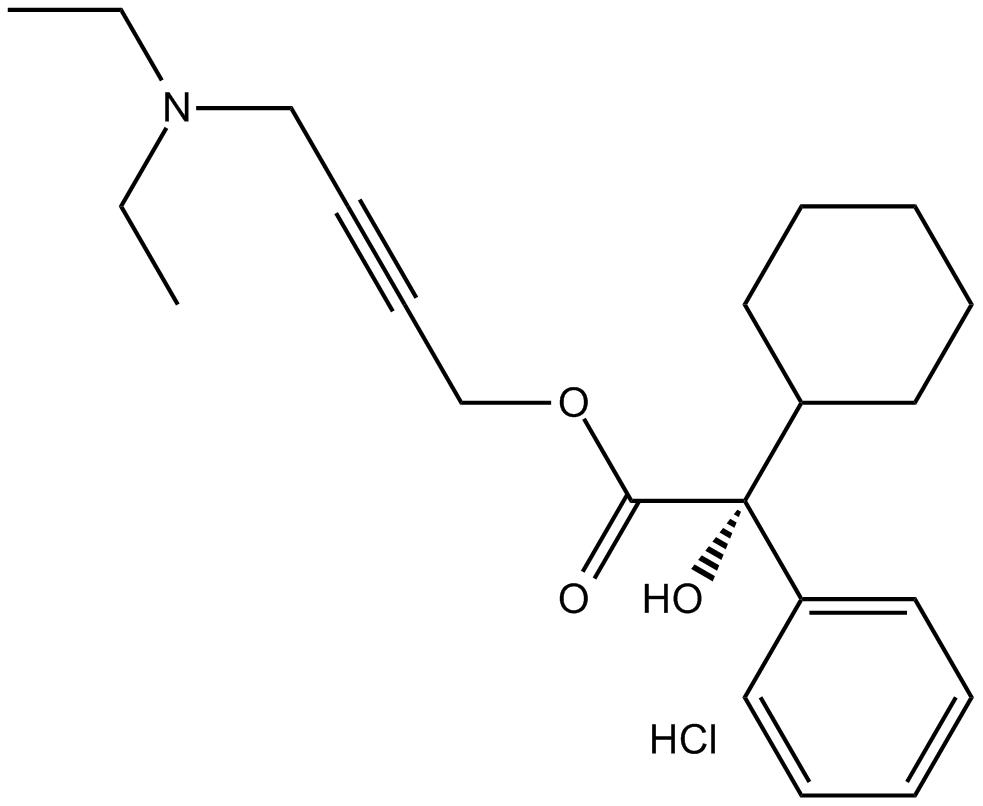 B1134 Oxybutynin chlorideSummary: Anticholinergic medication
B1134 Oxybutynin chlorideSummary: Anticholinergic medication -
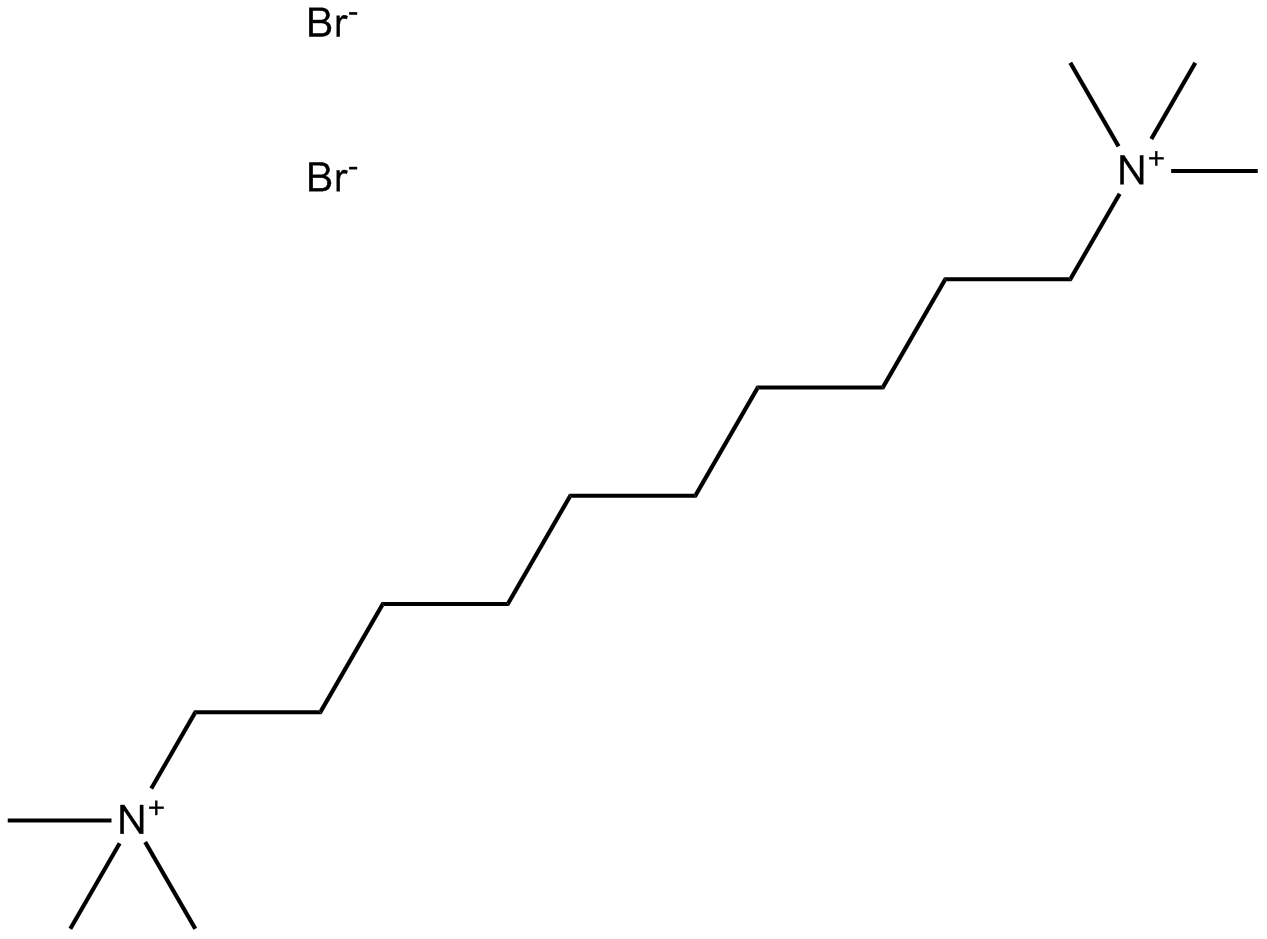 B1601 Decamethonium BromideSummary: Nicotinic AChR partial agonist
B1601 Decamethonium BromideSummary: Nicotinic AChR partial agonist -
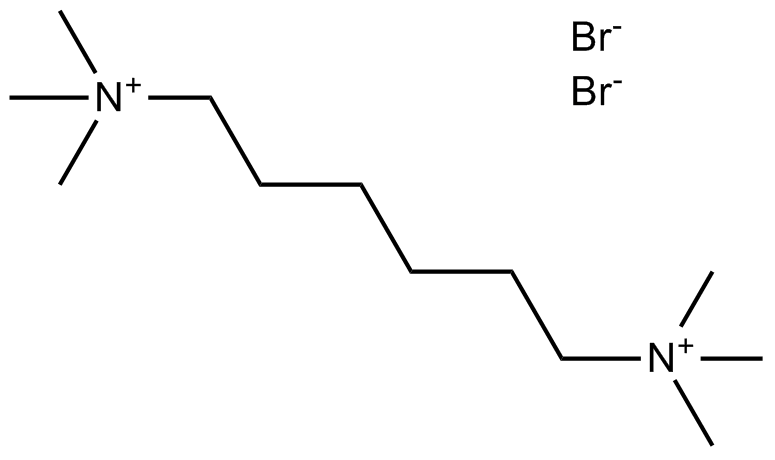 B1592 Hexamethonium BromideSummary: Selective antagonist of neuronal-type nicotinic AChR
B1592 Hexamethonium BromideSummary: Selective antagonist of neuronal-type nicotinic AChR -
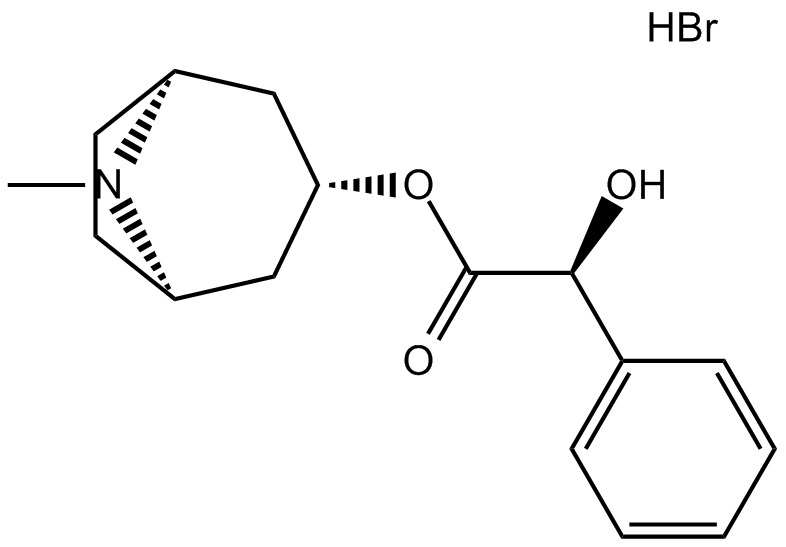 B1603 Homatropine BromideSummary: Muscarinic AChR antagonist
B1603 Homatropine BromideSummary: Muscarinic AChR antagonist -
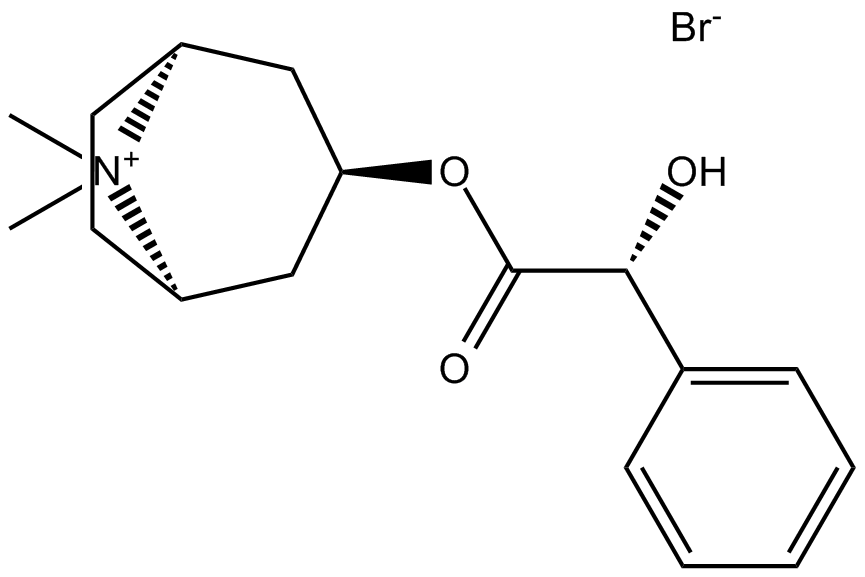 B1604 Homatropine MethylbromideSummary: Muscarinic AChR antagonist
B1604 Homatropine MethylbromideSummary: Muscarinic AChR antagonist -
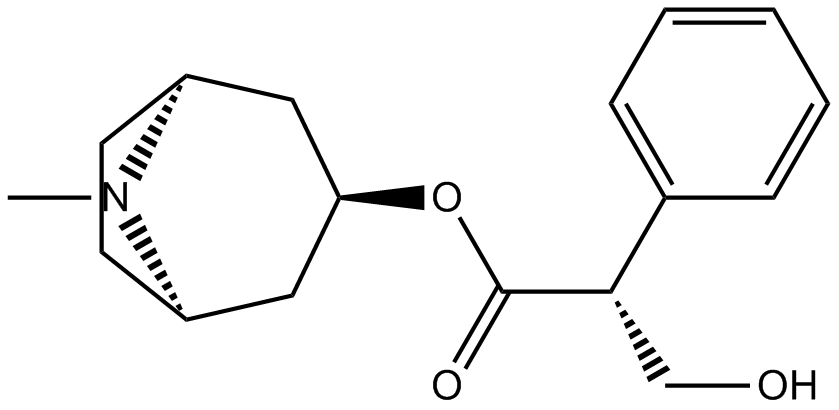 B1605 HyoscyamineSummary: AChR inhibitor
B1605 HyoscyamineSummary: AChR inhibitor -
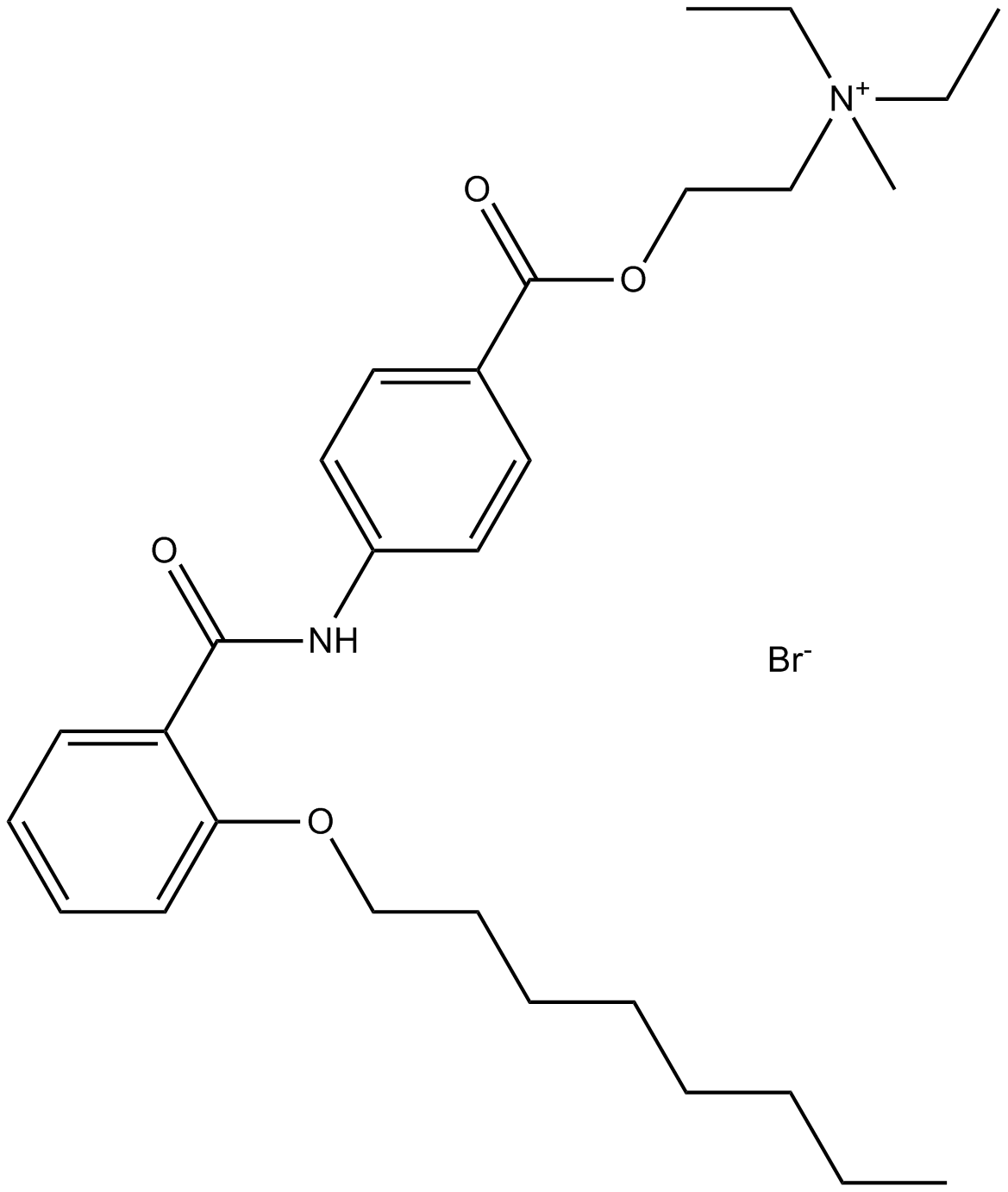 B1607 Otilonium BromideTarget: M3 ReceptorsSummary: AChR inhibitor
B1607 Otilonium BromideTarget: M3 ReceptorsSummary: AChR inhibitor -
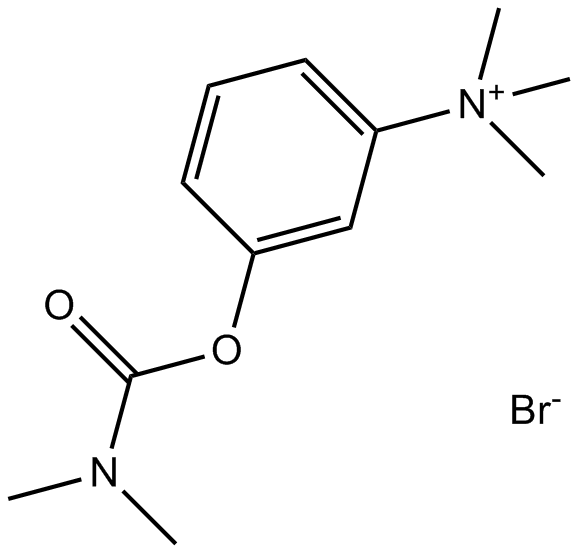 B1594 Neostigmine BromideSummary: Cholinesterase inhibitor
B1594 Neostigmine BromideSummary: Cholinesterase inhibitor

